What to do in Benissa: the 7 best things to do in Benissa
Benissa is a village that perfectly combines the beach and mountains which, together with its special gastronomy, makes Benissa a unique place to visit. If you're looking for something to see in Benissa, in the next post we'll explain the 7 best things to do in Benissa.
What to do in Benissa
National and international tourists are attracted to Benissa because of its climate, its coves, its old town and its gastronomy. Among the most important things to do in Benissa we could highlight:
1. Enjoying a good "Putxero de polp" (octopus stew)
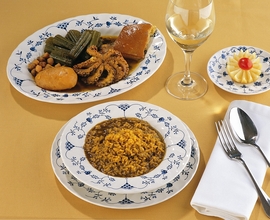
This delicious traditional dish is made with rice, octopus, potato, chickpeas, garlic, onion, tomato, “penca” vegetable, sweet potato and almonds. You can enjoy it in the restaurants Casa Cantó (965 73 06 29) and Ca Emilio (96 573 37 36 / 639 11 06 46), always on request.
2. Climbing the imposing Sierra de Bèrnia
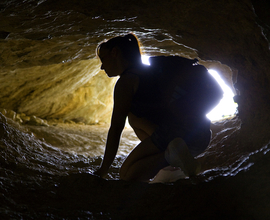
A visit to this 1.128 m high mountain is a must. Its most emblematic route is the Forat de Bèrnia (PRCV-7), in which we find a passage excavated into the rock that makes it possible to cross the Sierra de Bèrnia from one side to the other. Plus, the Fuerte de Bèrnia is located on the mountain, a Renaissance fort from the 16th century declared a Site of Cultural Interest.
3. Walking along the ecological promenade
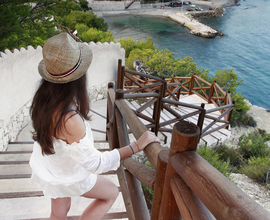
The ecological walk of Benissa, located in the coastal area of the municipality only 10 km from the town centre, is 3 km long. Here you can enjoy the small coves and beaches and a landscape with exceptional views.
4.Tasting different sausages from the region
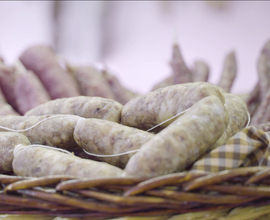
Another great part of the local gastronomy is the sausage, recognised by the whole of the Marina Alta including the "butifarra" (black pudding), "bufa" (round pudding), "blanquet" (white pudding) or "llonganissa" (traditional sausage). You can buy it in any of the local butcher's shops.
5. Strolling through the old town
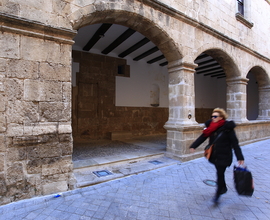
We must not forget the old town of Benissa. A place that will transport you to another time. We recommend a stroll along Calle Puríssima and Calle Desamparados, two of its most emblematic streets. And if you want to see one of its stately homes you can visit the Abargues House-Museum. Finally, don't miss the Catedral de la Marina.
6. Taking one of the MTB Routes
If you are a cycling enthusiast you are in luck, because you are in one of the best areas for this sport. Benissa has two MTB routes, the first of which is about 28 km long and goes as far as Parcent, crossing the Sierra de Bèrnia. The second is a circular route of about 20 km that passes through Xaló, a special route in which you will enjoy the landscape of the muscatel grape.
7. Enjoying its beaches
7.1. Les Bassetes
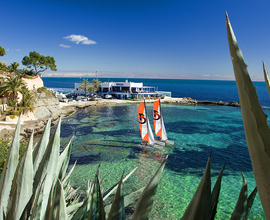 The southernmost stretch of Benissa's coastline is made up of the bay of les Bassetes, on the border between Benissa and Calpe. In this bay you can access the ecological walk from the south. Along the way you can enjoy marvellous views of the coastline and you will see several information panels that inform about the flora micro-reserve, which gives Les Bassetes a high ecological and environmental value.
The southernmost stretch of Benissa's coastline is made up of the bay of les Bassetes, on the border between Benissa and Calpe. In this bay you can access the ecological walk from the south. Along the way you can enjoy marvellous views of the coastline and you will see several information panels that inform about the flora micro-reserve, which gives Les Bassetes a high ecological and environmental value.
7.2. Playa La Fustera
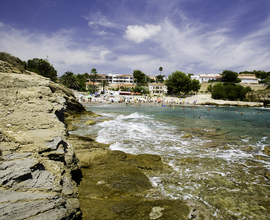 It is a beach with fine natural sand, dominated by majestic Posidonia meadows, which has been awarded several environmental distinctions such as the Blue Flag or the Ecoplayas Award. Nearby is the 10 metre high "La Fustera Cave" with a magnificent view of both the coast of Benissa and the Ifach rock. The tourist office Tourist Info Benissa Playa is just a few metres away.
It is a beach with fine natural sand, dominated by majestic Posidonia meadows, which has been awarded several environmental distinctions such as the Blue Flag or the Ecoplayas Award. Nearby is the 10 metre high "La Fustera Cave" with a magnificent view of both the coast of Benissa and the Ifach rock. The tourist office Tourist Info Benissa Playa is just a few metres away.
7.3. Cala Pinets
This is a small sand and rock cove from which you can start a small excursion by foot to the well-known "Mar Morta i Roques Negres" (Dead Sea and Black Rocks). "La Mar Morta" owes its name to a small, shallow sea area enclosed by rocks that protect it from the waves. It is very suitable for children.
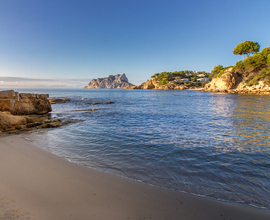
7.4. Cala la Llobella
You can still see pines on the same line of the sea. It is a cove of pebbles very suitable for the practice of underwater sports. The discreet access guarantees a reduced number of visitors. What stands out most about it are its enjoyable and transparent waters.
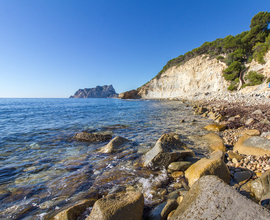
7.5. Platgeta de l’Advocat
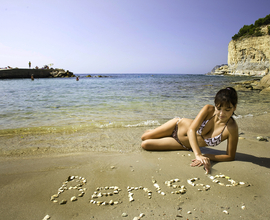 What stands out most about this cove is the existence of a small jetty and a small square to walk quietly. It also has a small protected sandy beach for children and a wonderful underwater environment. During the summer period it offers a beach bar service. The beach ends at a 47 metre cliff, "El Cantalar".
What stands out most about this cove is the existence of a small jetty and a small square to walk quietly. It also has a small protected sandy beach for children and a wonderful underwater environment. During the summer period it offers a beach bar service. The beach ends at a 47 metre cliff, "El Cantalar".
7.6. Cala Baladrar
 Cala Baladrar is a beautiful gate to the Mediterranean, with the pines overlooking the blue and inviting you to a pleasant bath. A rocky inlet divides this cove into the Baladrar and the Goleta. It is originated by the "Barranco dels Sesters", of boulder. The cove is protected from the easterly winds, and its shallow depth, good water clarity and abundance of life, make it ideal for a beautiful promenade.
Cala Baladrar is a beautiful gate to the Mediterranean, with the pines overlooking the blue and inviting you to a pleasant bath. A rocky inlet divides this cove into the Baladrar and the Goleta. It is originated by the "Barranco dels Sesters", of boulder. The cove is protected from the easterly winds, and its shallow depth, good water clarity and abundance of life, make it ideal for a beautiful promenade.

